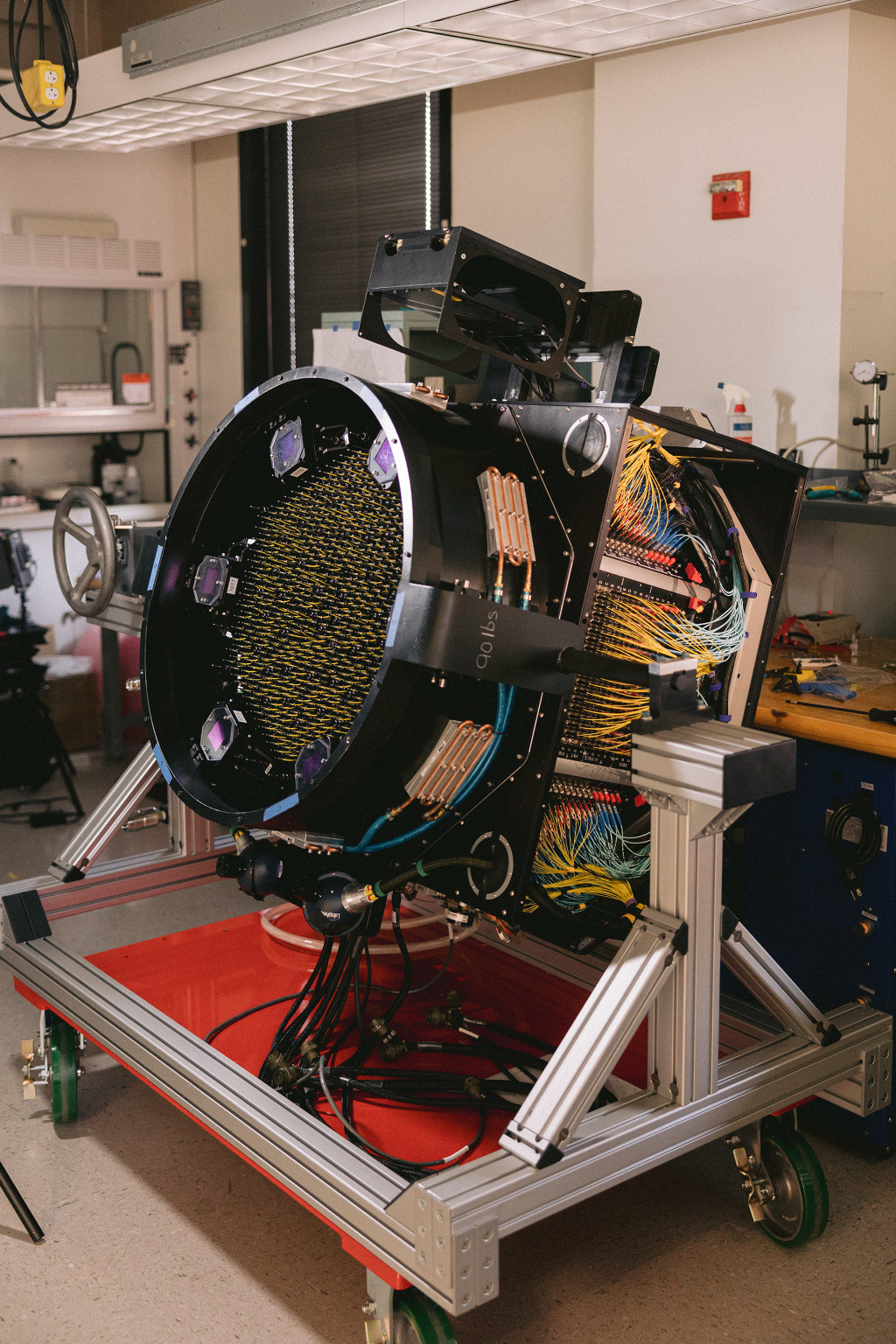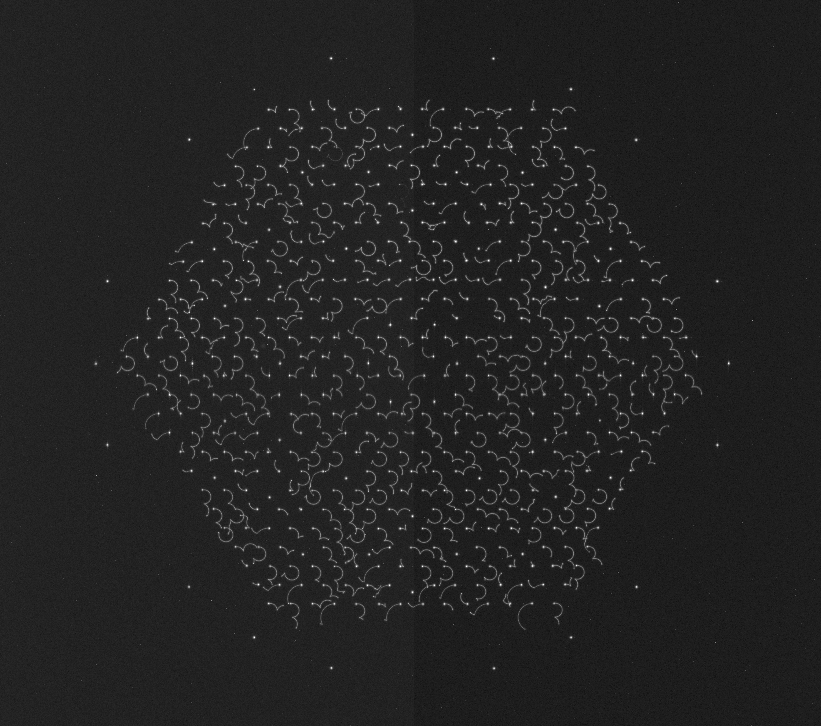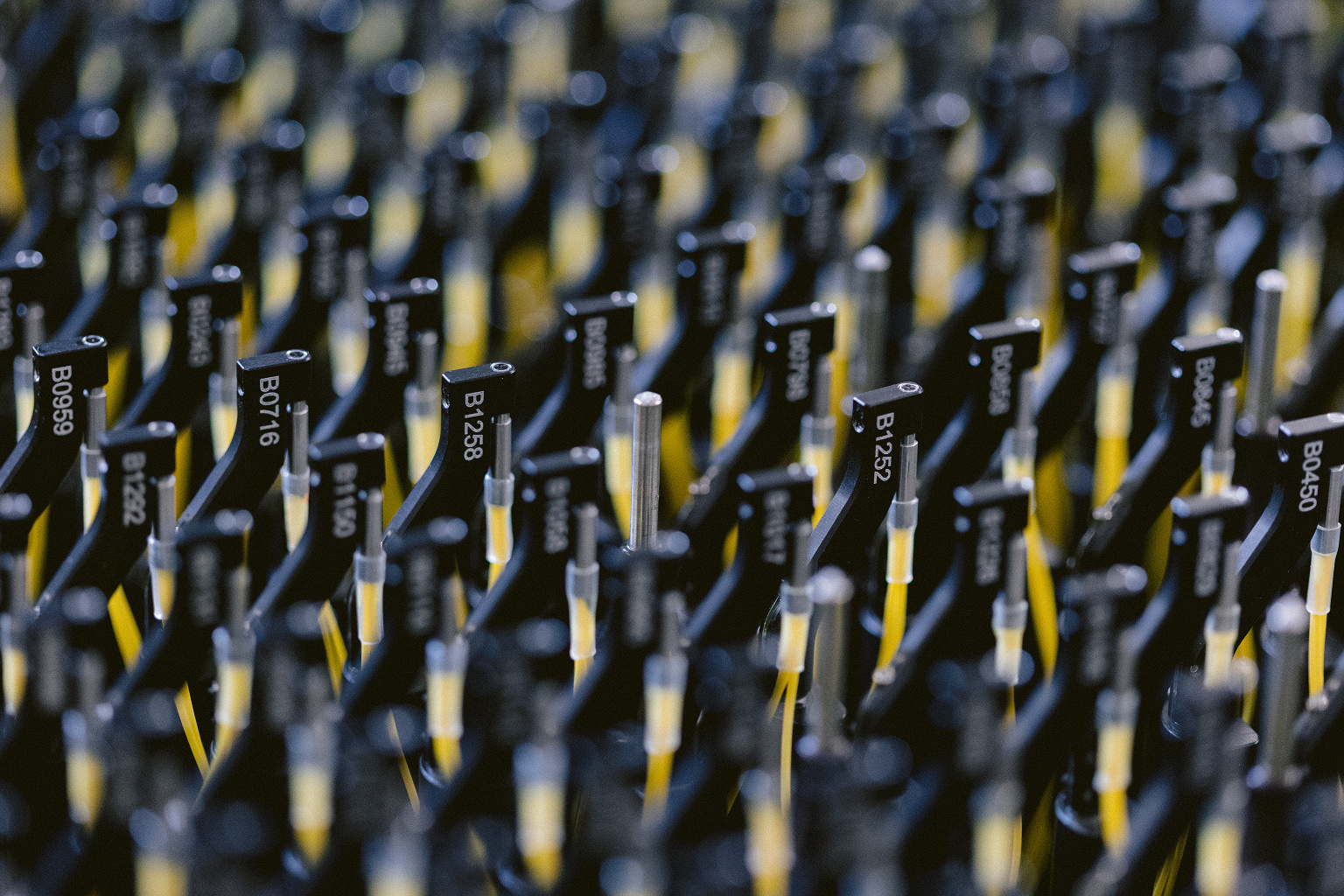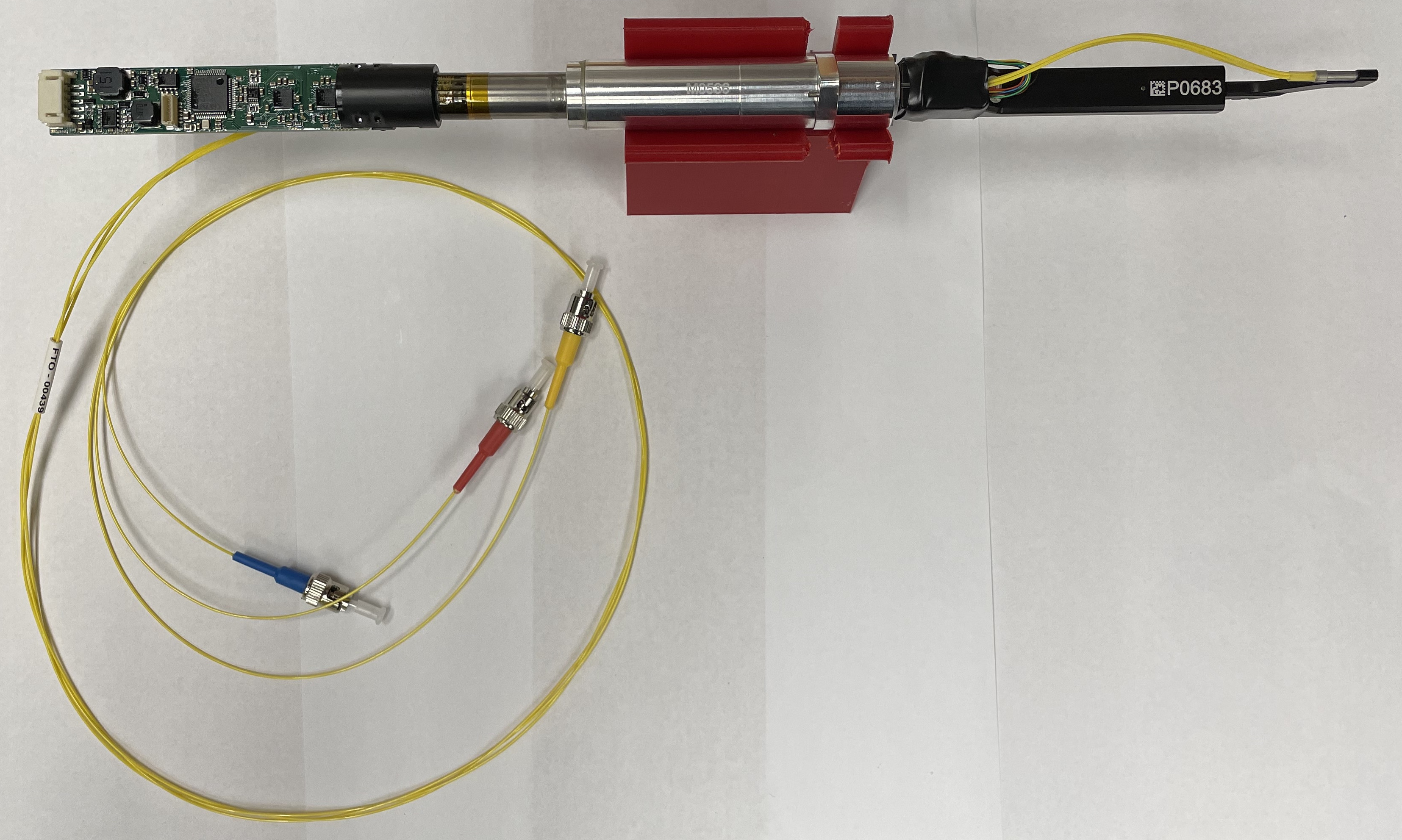To meet SDSS-V’s requirements of rapid cadence and high target densities, we have replaced the iconic SDSS fiber plug-plates with robotic Focal Plane Systems (FPS).

Each FPS unit deploys 500 zonal robotic fiber positioner units in a hexagonal array that covers the telescope focal plane. Each robot carries 3 optical fibers: two science fibers for the APOGEE and BOSS spectrographs (but only 298 of the APOGEE fibers are fed to the spectrograph), and one back-illuminated metrology fiber. The layout of the FPS focal plane is designed to maximize coverage of the telescope fields of view with 500 BOSS fibers and 298 APOGEE fibers.
60 fiber-illuminated fiducials (FIFs) are distributed throughout the robot array to provide a fixed coordinate reference. A telescope-mounted Fiber Viewing Camera (FVC) system acquires images of the back-illuminated metrology and FIF fibers to ensure precise positioning of BOSS or APOGEE science fibers on the targets.

Six 2K2 guide/focus/acquisition (GFA) cameras are deployed around the outside of the robot array to ensure rapid field acquisition and maintain precise guiding and focus during exposures.
The entire system is mounted in a precision-machined optomechanical mount that mates to the telescopes using the same latching system as was used with the old plug-plate cartridges.
The FPS robots allow us to account for atmospheric refraction more readily than drilled plates, greatly expanding the observing windows for the target fields and enhancing survey efficiency. The kaiju path-planning and collision avoidance software ensures rapid and accurate configuration of the robot array, reducing focal plane reconfiguration times from ~20 minutes (the time it takes to change a plug-plate) to ~3 minutes. Rapid reconfiguration also offers the ability to modify the target list on short timescales to accommodate observations of transients and other targets of opportunity.
There are two FPS units, one for the 2.5-m Sloan Telescope at APO and one for the 2.5-m du Pont Telescope, designed and built by the Imaging Sciences Laboratory at The Ohio State University. The fiber positioner robots were designed by the AstroRobotics group at Ecole Polytechnique Federale de Lausanne (EPFL) and manufactured by the Swiss precision micro-machine company MPS/Faulhaber. The custom “robotail” optical fiber assemblies were manufactured by FiberTech Optica in Canada.
The Sloan Telescope FPS unit was installed in December 2021 and began science operations in early 2022. The du Pont Telescope FPS unit was installed in August 2022 and began science operations in late 2022.


